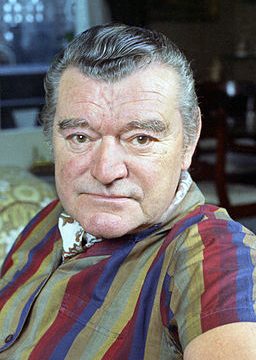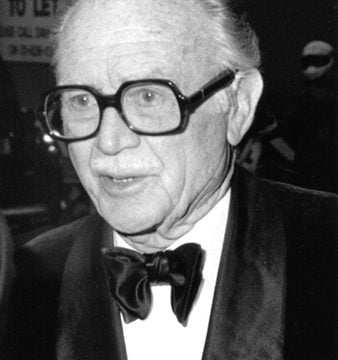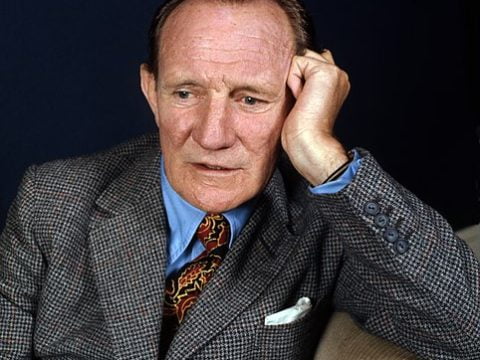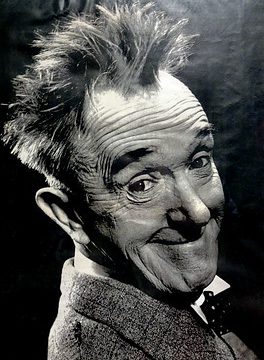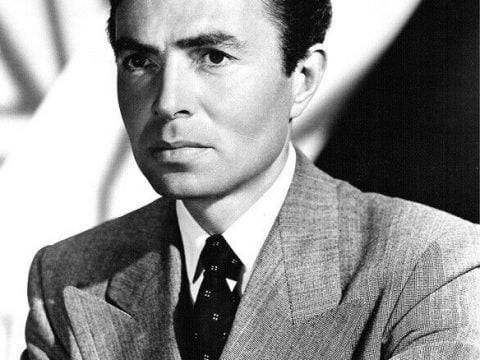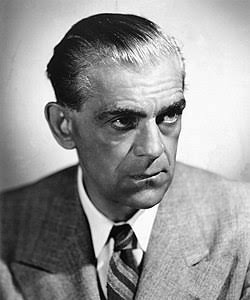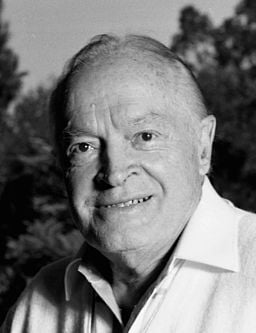
Early Life and Career
The actor and comedian Leslie Townes Hope, better known as ‘Bob’ Hope, was born on 29 May 1903, in Eltham, London. He was the fifth of seven sons of William Henry Hope, a stonemason, and his Welsh wife, Avis, a light opera singer. The family initially settled in Barry, Wales before moving to Bristol. After, briefly residing in Weston-Super-Mare the family emigrated to Cleveland, Ohio, USA, in 1908.
At the age of 12, Hope was already earning money as a street performer. Aged 15, he was admitted to the Lancaster Boys Industrial School, a former juvenile correction centre. Also, as a teenager, he had a brief boxing career, alongside a string of menial jobs. He became a U.S. citizen in 1920 at the age of seventeen. In his late teens, he decided on a career in entertainment and duly took dance lessons.
Now known as Lester Hope, he went on to work in Vaudeville with a succession of partners. Hope’s first Broadway appearance was a minor walk-on part in The Sidewalks of New York (1927). In 1929, Hope informally changed his first name to “Bob”. He thought it a more friendly-sounding name than Lester.
Film and Radio
Hope made his film debut starring in the comedy short Going Spanish (1934). At the same time, he was also making his mark in radio. The medium very much suited his quick-wit style of comedy. He made his feature-film debut a few years later in Paramount Picture’s The Big Broadcast of 1938 (1938), starring W. C. Fields. In the film, Hope sang “Thanks for the Memory” in a duet with Shirley Ross. The song went on to become Hope’s signature tune.
In 1938, Hope went on to star in three more films, i.e. College Swing, Give Me a Sailor, and Thanks for the Memory. The success of the films enabled him to launch his popular radio feature The Bob Hope Show. By the end of the 1930s, he was one of America’s most popular entertainers.
In 1940, Hope co-starred in the Road to Singapore, with Bing Crosby and Dorothy Lamour. It was the first in the seven highly popular “Road to” movies made between 1940 and 1962. Hope’s other successful films of the 1940s, included the likes of My Favorite Blonde (1942), Let’s Face It (1943), Monsieur Beaucaire (1946), Where There’s Life (1947), My Favorite Brunette (1947), and The Paleface (1948). It was also in the 1940s, during WW2, Hope began his association with the United Services Organisation (USO). The relationship saw him entertain American servicemen, stationed across the world, for more than 50 years.
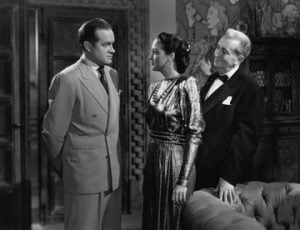
Bob Hope (left) with Dorothy Lamour and Bing Crosby. Image credit: Creative Commons
Later Career
During the 1950s, Hope made a further 18 films. Fancy Pants (1950), The Lemon Drop Kid (1951), Son of Paleface (1952), Casanova’s Big Night (1954), and That Certain Feeling (1956), were some of his most successful ’50s films. However, the popularity of his self-titled radio show, which had been broadcasting since 1938 was beginning to slip. By the end of the 1950s, Hope’s brand of humour had fallen out of favour with the majority of the public. His films could certainly no longer match the success of those from the 1940s.
Hope only made a dozen or so films in the ’60s, of which several were cameo roles. His film career effectively ended with his appearance in Cancel My Reservation (1972), his last starring role. The movie was panned by critics and filmgoers alike. However, he went on to make a few further cameo appearances, notably in The Muppets (1979). Hope’s ultimate role was in his first and last TV movie Masterpiece of Murder (1986), co-starring alongside Don Ameche.
In a film career that stretched from 1934 to 1986, Hope appeared in well over 60 feature films and 26 short movies. In addition, he hosted the Academy Awards ceremony 19 times between 1939 and 1977. He also had an extensive radio, television, and stage career.
Personal Life
Hope had a brief first marriage to one of his vaudeville partners. Grace Louise Troxell, a former secretary from Chicago, Illinois was nine years his junior. The couple married in Erie, Pennsylvania in January 1933. They divorced less than 2 years later in November 1934. A short time later, Hope allegedly wed the popular singer Dolores Reade. However, no record of the marriage has ever been found. Similarly, there are no wedding photos. The couple remained together until Hope’s death in 2003. They adopted four children during their union; Linda in 1939, Tony in 1940, Kelly in 1946, and Eleanora, (aka Nora) in 1946.
Despite his long (reputed) marriage to Dolores Reade, Hope had a reputation as a serial womaniser. According to the biographer, Richard Zoglin “he had a different girl on his arm every night.” He also reputedly had a 30-year affair with the 1961 Miss World winner Rosemarie Frankland. His infidelities were also documented in the film Misbehaviour (2020). The movie is set around the 1970 Miss World 1970 competition, which Hope hosted.
Humanitarian Work and Honours
Hope was a renowned passionate golfer and played up to 150 charity tournaments a year. In 1960, Hope hosted the new Palm Springs Golf Classic which saw golfing pros pitched against politicians and celebrities. The tournament was renamed the Bob Hope Desert Classic in 1965. The event carried Hope’s name for 47 years up until 2012, which was 9 years after his death. Hope also served for many years as the honorary chairman on the board of ‘Fight for Sight’. The US nonprofit organization funds medical research into sight problems, something with which Hope suffered for most of his adult life.
Throughout his career, Hope was recognised for his humanitarian and charity work. He received more than 1500 individual honours and awards during his lifetime. These include 54 honorary university doctorates. He also received several presidential awards, starting with Congressional Gold Medal from John F. Kennedy in 1963. In all, he appeared in and/or hosted around 200 USO shows, across the world, during his lifetime. In 1996, the U.S. Congress honored him by declaring that he was ” the first and only honorary veteran of the U.S. armed forces”. In 1998, Hope was awarded an honorary knighthood by Queen Elizabeth II.
Ill-health and Death
Hope remained in relatively good-health well into his old age, only becoming somewhat frail in his last few years. In June 2000, aged 97, he was admitted to a Californian hospital and treated for gastrointestinal bleeding. He also spent two weeks in a hospital to recover from pneumonia the following year.
Bob Hope died of pneumonia at his home in Toluca Lake, California on 27 July 2003. It was two months after his 100th birthday. His remains were temporarily placed in a mausoleum vault while the Bob Hope Memorial Garden at San Fernando Mission Cemetery in Los Angeles was being constructed. His wife Dolores’ remains were also buried at the mausoleum after she died in 2011, aged 102.
Header image credit: Creative Commons/(CC BY-SA 3.0)
